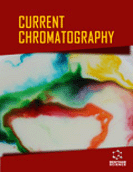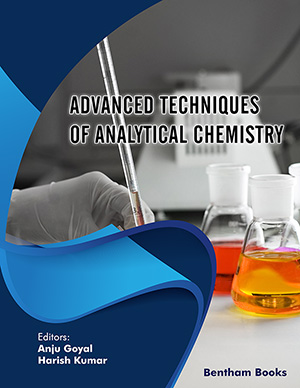Abstract
Background: Protein A affinity chromatography is often employed as the most crucial purification step for monoclonal antibodies to achieve high yield with purity and throughput requirements.
Introduction: Protein A, also known as Staphylococcal protein A (SPA) is found in the cell wall of the bacteria staphylococcus aureus. It is one of the first discovered immunoglobulin binding molecules and has been extensively studied since the past few decades. The efficiency of Protein A affinity chromatography to purify a recombinant monoclonal antibody in a cell culture sample has been evaluated, which removes 99.0% of feed stream impurities. Materials and Method: We have systematically evaluated the purification performance by using a battery of analytical methods SDS-PAGE (non-reduced and reduced sample), Cation Exchange Chromatography (CEX), Size-exclusion chromatography (SEC), and Reversed phased-Reduced Chromatography for a CHO-derived monoclonal antibody. Results and Discussion: The analytical test was conducted to determine the impurity parameter, Host Cell Contaminating Proteins (HCP). It was evaluated to be 0.015ng/ml after the purification step; while initially, it was found to be 24.431ng/ml. Conclusion: The tests showed a distinct decrease in the level of different impurities after the chromatography step. It can be concluded that Protein A chromatography is an efficient step in the purification of monoclonal antibodies.Keywords: Affinity chromatography, monoclonal antibody, protein A, SDS-PAGE, high-performance liquid chromatography (HPLC), host cell contaminating proteins (HCP).
[1]
Valdés, R.; Ibarra, N.; Ruibal, I.; Beldarraín, A.; Noa, E.; Herrera, N.; Alemán, R.; Padilla, S.; Garcia, J.; Pérez, M.; Morales, R.; Chong, E.; Reyes, B.; Quiñones, Y.; Agraz, A.; Herrera, L. Chromatographic removal combined with heat, acid and chaotropic inactivation of four model viruses. J. Biotechnol., 2002, 96(3), 251-258.
[http://dx.doi.org/10.1016/S0168-1656(02)00047-0]
[http://dx.doi.org/10.1016/S0168-1656(02)00047-0]
[2]
Johnston, A.; Macgregor, A.; Borovec, S.; Hattarki, M.; Stuckly, K.; Anderson, D.; Goss, N.H.; Oates, A.; Uren, E. Inactivation and clearance of viruses during the manufacture of high purity factor IX. Biologicals, 2000, 28(3), 129-136.
[http://dx.doi.org/10.1006/biol.1999.0242]
[http://dx.doi.org/10.1006/biol.1999.0242]
[3]
Fahrner, R.L.; Knudsen, H.L.; Basey, C.D.; Galan, W.; Feuerhelm, D.; Vanderlaan, M.; Blank, G.S. Industrial purification of pharmaceutical antibodies: Development, operation, and validation of chromatography processes. Biotechnol. Genet. Eng. Rev., 2001, 18, 301-327.
[http://dx.doi.org/10.1080/02648725.2001.10648017]
[http://dx.doi.org/10.1080/02648725.2001.10648017]
[4]
Hilbold, N.J.; Le Saoût, X.; Valery, E.; Muhr, L.; Souquet, J.; Lamproye, A.; Broly, H. Evaluation of several protein a resins for application to multicolumn chromatography for the rapid purification of fed-batch bioreactors. Biotechnol. Prog., 2017, 33(4), 941-953.
[http://dx.doi.org/10.1002/btpr.2465]
[http://dx.doi.org/10.1002/btpr.2465]
[5]
Kelley, B. Industrialization of mAb production technology: The bioprocessing industry at a crossroads. MAbs, 2009, 1(5), 443-452.
[http://dx.doi.org/10.4161/mabs.1.5.9448]
[http://dx.doi.org/10.4161/mabs.1.5.9448]
[6]
Vijayalakshmi Ayyar, B. Sushrut Arora, Caroline Murphy, Richard O’Kennedy. Affinity chromatography as a tool for antibody purification. Methods, 2012, 56, 116-129.
[http://dx.doi.org/10.1016/j.ymeth.2011.10.007]
[http://dx.doi.org/10.1016/j.ymeth.2011.10.007]
[7]
Corey, O.; David, H.; Raychelle, B.; Min, B.; Chunling, W.; Elizabeth, K. Bioaffinity chromatography. Handbook of Affinity Chromatography, 2nd ed; Hage, D.S.; Cazes, J., Eds.; CRC Press, New York; , 2005, pp. pp. 101-126.
[8]
Björk, L.; Åkerström, B. Bacterial immunoglobulin binding proteins.Academic Press; , 1990, p. 305.
[9]
Ishihara, T.; Hosono, M. Improving impurities clearance by amino acids addition to buffer solutions for chromatographic purifications of monoclonal antibodies. J. Chromatogr. B Analyt. Technol. Biomed. Life Sci., 2015, 995-996, 107-114.
[http://dx.doi.org/10.1016/j.jchromb.2015.05.018]
[http://dx.doi.org/10.1016/j.jchromb.2015.05.018]
[10]
Shukla, A.A.; Thömmes, J. Recent advances in large-scale production of monoclonal antibodies and related proteins. Trends Biotechnol., 2010, 28(5), 253-261.
[http://dx.doi.org/10.1016/j.tibtech.2010.02.001]
[http://dx.doi.org/10.1016/j.tibtech.2010.02.001]
[11]
Jungbauer, A.; Hahn, R. Engineering protein A affinity chromatography. Curr. Opin. Drug Discov. Devel., 2004, 7(2), 248-256.
[12]
Alzari, P.M.; Lascombe, M.B.; Poljak, R.J. Three-dimensional structure of antibodies. Annu. Rev. Immunol., 1988, 6, 555-580.
[http://dx.doi.org/10.1146/annurev.iy.06.040188.003011]
[http://dx.doi.org/10.1146/annurev.iy.06.040188.003011]
[13]
Burton, D.R. Structure and function of antibodies. New Comprehensive Biochemistry., 1987, 17, 1-50.
[http://dx.doi.org/10.1016/S0167-7306(08)60153-2]
[http://dx.doi.org/10.1016/S0167-7306(08)60153-2]
[14]
Wetterhall, M.; Grönberg, A.; Grönlund, S.; Björkman, T.; Sandberg, L.; Musunuri, S.; Chaloupka, K.; Gammell, P. Removal of B. cereus cereulide toxin from monoclonal antibody bioprocess feed via two-step Protein A affinity and multimodal chromatography. J. Chromatogr. B Analyt. Technol. Biomed. Life Sci., 2019, 1118-1119(15), 194-202.
[http://dx.doi.org/10.1016/j.jchromb.2019.04.018]
[http://dx.doi.org/10.1016/j.jchromb.2019.04.018]
[15]
Luo, J.; Obmolova, G.; Huang, A.; Strake, B.; Teplyakov, A.; Malia, T.; Muzammil, S.; Zhao, Y.; Gilliland, G.L.; Feng, Y. Coevolution of antibody stability and Vκ CDR-L3 canonical structure. J. Mol. Biol., 2010, 402(4), 708-719.
[http://dx.doi.org/10.1016/j.jmb.2010.08.009]
[http://dx.doi.org/10.1016/j.jmb.2010.08.009]
[16]
Silverton, E.W.; Navia, M.A.; Davies, D.R. Three-dimensional structure of an intact human immunoglobulin. Proc. Natl. Acad. Sci. USA, 1977, 74(11), 5140-5144.
[http://dx.doi.org/10.1073/pnas.74.11.5140]
[http://dx.doi.org/10.1073/pnas.74.11.5140]
[17]
Horwitz, A.H.; Chang, C.P.; Better, M.; Hellstrom, K.E.; Robinson, R.R. Secretion of functional antibody and fab fragment from yeast cells. Proc. Natl. Acad. Sci. USA, 1988, 85(22), 8678-8682.
[http://dx.doi.org/10.1073/pnas.85.22.8678]
[http://dx.doi.org/10.1073/pnas.85.22.8678]
[18]
Riechmann, L.; Clark, M.; Waldmann, H.; Winter, G. Reshaping human antibodies for therapy. Nature, 1988, 332(6162), 323-327.
[http://dx.doi.org/10.1038/332323a0]
[http://dx.doi.org/10.1038/332323a0]
[19]
Al-Ejeh, F.; Darby, J.M.; Tsopelas, C.; Smyth, D.; Manavis, J.; Brown, M.P. APOMAB, a La-specific monoclonal antibody, detects the apoptotic tumor response to life-prolonging and DNA-damaging chemotherapy. PLoS One, 2009, 4(2), e4558.
[http://dx.doi.org/10.1371/journal.pone.0004558]
[http://dx.doi.org/10.1371/journal.pone.0004558]
[20]
Imran, A.; Waseem, W.A.; Kishwar, S.; Ming-Fa, H. Design and synthesis of thalidomide based dithiocarbamate Cu (II), Ni (II) and Ru (III) complexes as anticancer agents. Polyhedron, 2013, 56(12), 134-143.
[21]
Imran, A.; Mohammad, N.L.; Zeid, A. Al-Othman, A. Al-Warthan, Mohd. Marsin Sanagi. Heterocyclic scaffolds: Centrality in anticancer drug development. Curr. Drug Targets, 2015, 16(7), 711-734.
[22]
Pereira, D.M.; Cheel, J.; Areche, C.; San-Martin, A.; Rovirosa, J.; Silva, L.R.; Valentao, P.; Andrade, P.B. Anti-proliferative activity of meroditerpenoids isolated from the brown alga Stypopodium flabelliforme against several cancer cell lines. Mar. Drugs, 2011, 9(5), 852-862.
[http://dx.doi.org/10.3390/md9050852]
[http://dx.doi.org/10.3390/md9050852]
[23]
Ferlay, J.; Shin, H-R.; Bray, F.; Forman, D.; Mathers, C.; Parkin, D.M. Estimates of worldwide burden of cancer in 2008: GLOBOCAN 2008. Int. J. Cancer, 2010, 127(12), 2893-2917.
[http://dx.doi.org/10.1002/ijc.25516]
[http://dx.doi.org/10.1002/ijc.25516]
[24]
Ali, I. Nano anti-cancer drugs: Pros and cons and future perspectives. Curr. Cancer Drug Targets, 2011, 11(2), 131-134.
[http://dx.doi.org/10.2174/156800911794328457]
[http://dx.doi.org/10.2174/156800911794328457]
[25]
Ali, I. Rahis-ud-din; Saleem, K.; Aboul-Enein, H. Y.; Rather, A. Social aspects of cancer genesis. Cancer Ther., 2011, 8, 6-14.
[26]
Ali, I.; Lone, M.N.; Aboul-Enein, H.Y. Imidazoles as potential anticancer agents. MedChemComm, 2017, 8(9), 1742-1773.
[http://dx.doi.org/10.1039/C7MD00067G]
[http://dx.doi.org/10.1039/C7MD00067G]
[27]
So, Y.; Lee, K-J.; Kim, D-S. Glycomodification and characterization of anti-colorectal cancer immunotherapeutic monoclonal antibodies in transgenic tobacco. Plant Cell Tissue Organ Cult., 2013, 113(1), 41-49.
[http://dx.doi.org/10.1007/s11240-012-0249-z]
[http://dx.doi.org/10.1007/s11240-012-0249-z]
[28]
Lee, J-H.; Park, D-Y.; Lee, K-J.; Kim, Y.K.; So, Y.K.; Ryu, J.S.; Oh, S.H.; Han, Y.S.; Ko, K.; Choo, Y.K.; Park, S.J.; Brodzik, R.; Lee, K.K.; Oh, D.B.; Hwang, K.A.; Koprowski, H.; Lee, Y.S.; Ko, K. Intracellular reprogramming of expression, glycosylation, and function of a plant-derived antiviral therapeutic monoclonal antibody. PLoS One, 2013, 8(8), e68772.
[http://dx.doi.org/10.1371/journal.pone.0068772]
[http://dx.doi.org/10.1371/journal.pone.0068772]
[29]
Vuist, W.M.J.; Levy, R.; Maloney, D.G. Lymphoma regression induced by monoclonal anti-idiotypic antibodies correlates with their ability to induce Ig signal transduction and is not prevented by tumor expression of high levels of bcl-2 protein. Blood, 1994, 83(4), 899-906.
[http://dx.doi.org/10.1182/blood.V83.4.899.899]
[http://dx.doi.org/10.1182/blood.V83.4.899.899]
[30]
Ko, K.; Brodzik, R.; Steplewski, Z. Production of antibodies in plants: Approaches and perspectives. Curr. Top. Microbiol. Immunol., 2009, 332, 55-78.
[http://dx.doi.org/10.1007/978-3-540-70868-1_4]
[http://dx.doi.org/10.1007/978-3-540-70868-1_4]
[31]
Desai, T.; Thaker, A. Ultra performance liquid chromatography: The new chromatographic technique. Elixir Pharmacy., 2012, 51A, 11148-11153.
[32]
Goodwin, L.; White, S.A.; Spooner, N. Evaluation of ultra-performance liquid chromatography in the bioanalysis of small molecule drug candidates in plasma. J. Chromatogr. Sci., 2007, 45(6), 298-304.
[http://dx.doi.org/10.1093/chromsci/45.6.298]
[http://dx.doi.org/10.1093/chromsci/45.6.298]
[33]
Li, Y. Migration analysis of DEHP from inner liner of beer bottle caps by HPLC. Procedia Environ. Sci., 2012, 12, 17-21.
[http://dx.doi.org/10.1016/j.proenv.2012.01.241]
[http://dx.doi.org/10.1016/j.proenv.2012.01.241]
[34]
Wang, Y.; Ding, C.; Wu, C.; Du, K.; Zhangn, J.; Qin, H.; Hou, J.; Du, G. HPLC–MS and HPLC–MS/MS analysis of seven active constituents of Xiao-Xu-Ming decoction and application to a pharmacokinetic study after oral administration to rat. Acta Pharm. Sin. B, 2012, 2(2), 188-197.
[http://dx.doi.org/10.1016/j.apsb.2012.01.003]
[http://dx.doi.org/10.1016/j.apsb.2012.01.003]
[35]
Salam, S.H.; Hotzel, H. Investigation of phenotypic variations amongst Mycoplasma bovis field German isolates using SDS- PAGE Hala. J. Basic Appl. Sci., 2013, 2(103), e107.
[36]
Patil, G.; Kumar, V.G.; Ramachandra, S.G.; Rao, A.J.; Nandi, S. Two dimensional SDS PAGE analysis of epididymal tissue proteins of normal and castrated bulls (Bos taurus) and identification of an androgen dependant protein. Asian Pac. J. Reprod., 2012, 1(3), 203-211.
[http://dx.doi.org/10.1016/S2305-0500(13)60078-0]
[http://dx.doi.org/10.1016/S2305-0500(13)60078-0]
[37]
Sayed, N.H.M. Phylogenetic relationship among five geckos from egypt based on RAPD-PCR and protein electrophoresis (SDS–PAGE). J. Basic Appl. Zool., 2012, 65, 184-190.
[http://dx.doi.org/10.1016/j.jobaz.2012.07.004]
[http://dx.doi.org/10.1016/j.jobaz.2012.07.004]
[38]
Francisco, A.O. Carvalhoa, José W. P., Carvalhoa, Patrícia S. S., Marcel T. Further characterization of the subunits of the giant extracellular hemoglobin of Glossoscolex paulistus (HbGp) by SDS- PAGE electrophoresis and MALDI-TOF-MS. Process Biochem., 2011, 46, 2144-2151.
[http://dx.doi.org/10.1016/j.procbio.2011.08.013]
[http://dx.doi.org/10.1016/j.procbio.2011.08.013]
[39]
Mulot, S.F.C.; Hughes, K.; Woodgett, J.R.; Anderton, B.H.; Hanger, D.P. PHF-tau from Alzheimer’s brain comprises four species on SDS-PAGE which can be mimicked by in vitro phosphorylation of human brain tau by glycogen synthase kinase-3 beta. FEBS Lett., 1994, 349(3), 359-364.
[http://dx.doi.org/10.1016/0014-5793(94)00702-0]
[http://dx.doi.org/10.1016/0014-5793(94)00702-0]
[40]
Urmann, M.; Hafner, M.; Frech, C. Influence of protein and stationary phase properties on protein-matrix-interaction in cat-ion exchange chromatography. J. Chromatogr. A, 2011, 1218(31), 5136-5145.
[http://dx.doi.org/10.1016/j.chroma.2011.05.085]
[http://dx.doi.org/10.1016/j.chroma.2011.05.085]
[41]
XinChen. DennisTolley H., Leea M. L. Polymeric cation-exchange monolithic columns containing phosphoric acid functional groups for capillary liquid chromatography of peptides and proteins. J. Chromatogr. A, 2010, 1217(24), 3844-3854.
[42]
Transfiguracion, J.; Jorio, H.; Meghrous, J.; Jacob, D.; Kamen, A. High yield purification of functional baculovirus vectors by size exclusion chromatography. J. Virol. Methods, 2007, 142(1-2), 21-28.
[43]
Grabski, A.; Drott, D.; Handley, M.; Mehler, M.; Novy, R. Extraction and purification of proteins from E. coli without harvesting cells. ScientificWorldJournal, 2002, 2(S2), 36-38.
[http://dx.doi.org/10.1100/tsw.2002.19]
[http://dx.doi.org/10.1100/tsw.2002.19]
[44]
Michelle, R.S.; L’ıvian, R.V.; Carlos, R.; Elita, S.; Viridiana, S.F.L. The use of hrp in decolorization of reactive dyes and toxicological evaluation of their products. Enzyme Res., 2010, 703824.
[http://dx.doi.org/10.4061/2010/703824]
[http://dx.doi.org/10.4061/2010/703824]
[45]
Desai, M.A. Immunoaffinity adsorption: Process-scale isolation of therapeutic-grade biochemicals. J. Chem. Technol. Biotechnol., 1990, 48(2), 105-126.
[http://dx.doi.org/10.1002/jctb.280480202]
[http://dx.doi.org/10.1002/jctb.280480202]
[46]
Rane, S.S.; Ajameri, A.; Mody, R.; Padmaja, P. Development and validation of RP-HPLC and RP-UPLC methods for quantification of parathyroid hormones (1-34) in medicinal product formulated with meta-cresol. J. Pharm. Anal., 2012, 2(2), 136-142.
[http://dx.doi.org/10.1016/j.jpha.2011.12.001]
[http://dx.doi.org/10.1016/j.jpha.2011.12.001]
[47]
Rane, S.S.; Ajameri, A.; Mody, R.; Padmaja, P. Development and validation of RP-HPLC and RP-UPLC methods for quantification of erythropoietin formulated with human serum albumin. J. Pharm. Anal., 2012, 2(2), 160-165.
[http://dx.doi.org/10.1016/j.jpha.2011.11.006]
[http://dx.doi.org/10.1016/j.jpha.2011.11.006]
[48]
Lintern, K.; Pathak, M.; Smales, C.M.; Howland, K.; Rathore, A.; Bracewell, D.G. Residual on column host cell protein analysis during lifetime studies of protein A chromatography. J. Chromatogr. A, 2016, 1461, 70-77.
[http://dx.doi.org/10.1016/j.chroma.2016.07.055]
[http://dx.doi.org/10.1016/j.chroma.2016.07.055]
[49]
Pabst, T.M.; Thai, J.; Hunter, A.K.; Hunter, T.M. Evaluation of recent Protein A stationary phase innovations for capture of biotherapeutics. J. Chromatogr. A, 2018, 1554(1554), 45-60.
[http://dx.doi.org/10.1016/j.chroma.2018.03.060]
[http://dx.doi.org/10.1016/j.chroma.2018.03.060]
[50]
Gagnon, P.; Nian, R. Conformational plasticity of IgG during protein A affinity chromatography. J. Chromatogr. A, 2016, 1433(1433), 98-105.
[http://dx.doi.org/10.1016/j.chroma.2016.01.022]
[http://dx.doi.org/10.1016/j.chroma.2016.01.022]
[51]
Krepper, W.; Satzer, P.; Beyer, B.M.; Jungbauer, A. Temperature dependence of antibody adsorption in protein A affinity chromatography. J. Chromatogr. A, 2018, 1551(1551), 59-68.
[http://dx.doi.org/10.1016/j.chroma.2018.03.059]
[http://dx.doi.org/10.1016/j.chroma.2018.03.059]
[52]
Khan, S.; Ullah, M.W.; Siddique, R.; Nabi, G.; Manan, S.; Yousaf, M.; Hou, H. Role of recombinant DNA technology to improve life. Int. J. Genomics, 2008, 2016, 2405954.
[53]
Toinon, A.; Fontaine, C.; Thion, L.; Gajewska, B.; Carpick, B.; Nougarede, N.; Uhlrich, S. Host cell protein testing strategy for hepatitis B antigen in Hexavalent vaccine - Towards a general testing strategy for recombinant vaccines. Biologicals, 2018, 54, 1-7.
[http://dx.doi.org/10.1016/j.biologicals.2018.05.006]
[http://dx.doi.org/10.1016/j.biologicals.2018.05.006]
[54]
Urbina, J.P.C.; Daniel, C.; Emmelmann, C. Experimental and analytical investigation of cemented tungsten carbide ultra-short pulse laser ablation. Phys. Procedia, 2013, 41, 752-758.
[http://dx.doi.org/10.1016/j.phpro.2013.03.144]
[http://dx.doi.org/10.1016/j.phpro.2013.03.144]
[55]
Bhole, K.S.; Gandhi, P.S.; Kundu, T. Characterization of cured width under wide range of Gaussian Laser exposure for bulk lithography. Procedia Mat. Sci., 2014, 5, 2487-2492.
[http://dx.doi.org/10.1016/j.mspro.2014.07.500]
[http://dx.doi.org/10.1016/j.mspro.2014.07.500]
[57]
Dartora, ; de Souza, L.M.; Santana-Filho, A.P.; Iacomini, M.; Valduga, A.T.; Philip, A.J.G.; Sassaki, G.L. UPLC-PDA–MS evaluation of bioactive compounds from leaves of Ilex paraguariensis with different growth conditions, treatments and ageing. Food Chem., 2011, (129), 1453-1461.
[http://dx.doi.org/10.1016/j.foodchem.2011.05.112]
[http://dx.doi.org/10.1016/j.foodchem.2011.05.112]
Article Metrics
 12
12

















